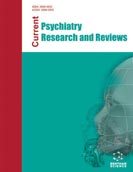
Abstract
Background: One of the risk factors for suicide includes the presence of depressive disorder and symptoms, which may be related to the reduction of 25-hydroxyvitamin D serum levels. In this scenario, evidence shows vitamin D deficiency as an important aspect directly related to depressive disorder chronicity.
Objective: To assess the association between Vitamin D serum levels and the intensity of depressive symptoms and suicidal behavior in a clinical sample of depressed patients.
Methods: A cross-sectional study with 146 patients aged between 18 and 59, seen in two psychiatry ambulatories. Data collection involved measurement of serum 25-hydroxyvitamin D levels and assessment of the intensity of depressive symptoms and suicide risk.
Results: In the sample, 35% presented low Vitamin D serum levels and, in these individuals, the incidence of family history of Depressive Disorder (95.2%) and chronicity of severe depressive symptoms (47.8%) was higher. As to suicidal behavior, both groups presented high active suicide risk, with higher rates in the group with hypovitaminosis D. Only suicidal ideation was linked to lower Vitamin D levels (67.4% p= 0,005).
Conclusion: In this study, hypovitaminosis D was associated with negative mental health outcomes, such as more severe chronicity of depressive symptoms and suicidal behavior, characterized by active suicidal ideation.
Keywords: Vitamin D, vitamin D deficiency, depressive symptoms, major depressive disorder, suicide risk, suicide, attempted, psychiatry, behavior.
Graphical Abstract
[http://dx.doi.org/10.2147/PRBM.S274769] [PMID: 33299365]
[http://dx.doi.org/10.1093/qjmed/hcaa202] [PMID: 32539153]
[http://dx.doi.org/10.1093/qjmed/hcab007] [PMID: 33486531]
[http://dx.doi.org/10.1176/appi.ajp.2019.18080957] [PMID: 31164008]
[http://dx.doi.org/10.1192/bjp.2018.27] [PMID: 29587888]
[http://dx.doi.org/10.1017/S0033291718002301] [PMID: 30178722]
[http://dx.doi.org/10.3945/jn.115.218883] [PMID: 26609167]
[http://dx.doi.org/10.3390/nu6041501] [PMID: 24732019]
[http://dx.doi.org/10.4103/IJPSYM.IJPSYM_160_19] [PMID: 31997861]
[http://dx.doi.org/10.1590/1516-4446-2018-0105] [PMID: 30785536]
[http://dx.doi.org/10.1176/appi.ajp.2011.10111704] [PMID: 22193671]
[http://dx.doi.org/10.1037/bul0000102] [PMID: 28447828]
[http://dx.doi.org/10.1016/j.socscimed.2020.113088] [PMID: 32540513]
[http://dx.doi.org/10.1192/bjp.bp.107.040113] [PMID: 18245022]
[http://dx.doi.org/10.1097/YPG.0000000000000240] [PMID: 31464997]
[http://dx.doi.org/10.1097/YCO.0000000000000423] [PMID: 29708895]
[http://dx.doi.org/10.1176/appi.ajp.157.10.1552] [PMID: 11007705]
[http://dx.doi.org/10.1002/da.22913] [PMID: 31111623]
[http://dx.doi.org/10.1016/j.beem.2011.05.009] [PMID: 21872806]
[http://dx.doi.org/10.1124/pr.116.013227] [PMID: 28202503]
[http://dx.doi.org/10.1096/fj.14-268342] [PMID: 25713056]
[http://dx.doi.org/10.1055/s-0034-1396893] [PMID: 25723858]
[http://dx.doi.org/10.1016/j.mce.2016.08.006] [PMID: 27524410]
[http://dx.doi.org/10.1007/s12031-019-01461-2] [PMID: 31836995]
[http://dx.doi.org/10.1098/rstb.2015.0434] [PMID: 27377727]
[http://dx.doi.org/10.1038/nri.2015.5] [PMID: 26711676]
[http://dx.doi.org/10.4103/0253-7176.178772] [PMID: 27114622]
[http://dx.doi.org/10.1007/s11920-019-1007-2] [PMID: 30852725]
[http://dx.doi.org/10.30773/pi.2019.0171] [PMID: 32209966]
[http://dx.doi.org/10.1016/j.neubiorev.2016.10.031] [PMID: 27836463]
[http://dx.doi.org/10.1038/npp.2015.309] [PMID: 26450815]
[http://dx.doi.org/10.1007/s11920-017-0781-y] [PMID: 28470485]
[http://dx.doi.org/10.1007/s00213-016-4218-9] [PMID: 26847047]
[http://dx.doi.org/10.12659/MSM.912840] [PMID: 30672512]
[http://dx.doi.org/10.1111/acps.12458] [PMID: 26256862]
[http://dx.doi.org/10.1371/journal.pone.0051543] [PMID: 23308099]
[http://dx.doi.org/10.1016/j.psyneuen.2014.08.016] [PMID: 25240206]
[http://dx.doi.org/10.1016/j.jad.2020.01.168] [PMID: 32063570]












